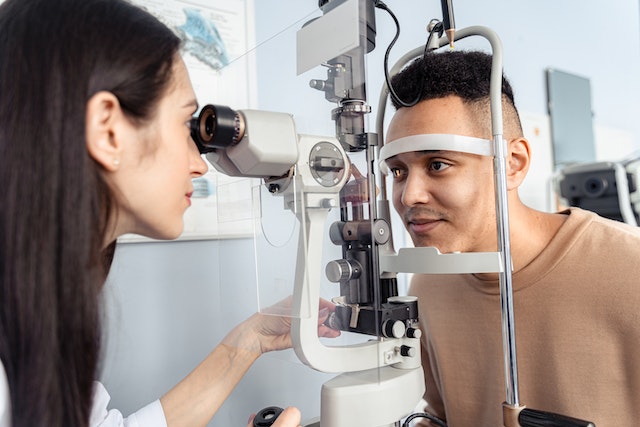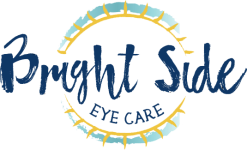While some schools might offer vision screenings by nursing staff for your child, they might not always be properly conducted, accurate, or even offered at all. To make sure your child’s vision and overall eye health is in good standing you should visit a local ophthalmologist or optometrist. If you are in the Palm Beach County area, your child’s vision will be in good hands with Dr. Ashley Baker at Brightside Eye Care.
Even while you might not believe it’s critical for your child to have their eyes examined before they can read, eye exams can identify problems that, if not treated in a timely manner. Additionally, occasionally a youngster who has been labeled as having a learning disability like ADHD or dyslexia actually has a vision issue.
For your child to succeed in school, learn, participate in extracurricular activities like sports, and have clear eyesight, eye health is crucial. Eye checkups shouldn’t be quick trips to the doctor’s office. Have your child’s eyes examined when they are three years old and once more before they start school. How frequently you visit an eye doctor after that depends on your child’s eye health and vision requirements.
What to Bring to Your Child’s Pediatric Eye Visit
It would be beneficial to include any insurance information and cards, as well as your child’s prescription list (if applicable). Please make an effort to bring any prior records if your child has had eye surgery. Forms regarding your medical history and current medications must be completed before your examination. These forms are additionally accessible online before your visit for your convenience. If you have any questions for your eye doctor, it would be helpful to bring these in a list so that you get all of the information you want/need.
What Types of Test Will the Eye Doctor Perform?
- A pediatric eye exam in Lake Worth will use various age-appropriate testing methods to evaluate your child’s eyesight. Matching games, letter recognition exercises, and even visuals may be used. It is crucial to assess each eye independently since a youngster might still function normally even if one eye has poor vision and the other functions properly.
- Your child’s intraocular pressure will be examined to determine whether it is within normal limits.
- A pediatric eye exam in Lake Worth will also test the child’s capacity to use both eyes simultaneously and the muscle function of each eye. Lake Worth pediatric eye care will screen for strabismus; this is the condition where the two eyes do not work together and allow the brain to develop and perceive depth perception.
- Pediatric eye care in Lake Worth will assess the condition of the front part of the eyes and how the pupil responds to light.
- Every initial test typically includes an eye exam with eye drops to dilate both eyes. It takes 30 to 45 minutes for dilation. During this crucial portion of the examination, the doctor will be able to examine the inside and rear of the eyes as well as the lens, retina, and optic nerve of your child. Dilation also enables us to assess your child’s vision for correct focus by measuring the eye’s focusing system. We test for astigmatism, hyperopia (farsightedness), and myopia (nearsightedness). We also make sure that both eyes are focused similarly. The pupils will continue to be dilated for several hours after the assessment. The near eyesight may become slightly blurry and more sensitive to sunshine as a result.
- Depending on the results of the earlier portions of your examination, additional tests may also be carried out as necessary. Formal visual field tests, photography, high-resolution back-of-the-eye scans, pachymetry to measure corneal thickness, and ophthalmic ultrasound are a few of these.
Preparation for Success
The pediatric eye care Lake Worth team will go through the examination’s findings with you afterward and address any queries you may have. A visit to the eye doctor may be both exhilarating and frightening for children. They are exposed to a new setting, all of that odd machinery, and the attention of strangers. Preparing ahead of time can limit anxiety and lead to a successful pediatric eye exam.



